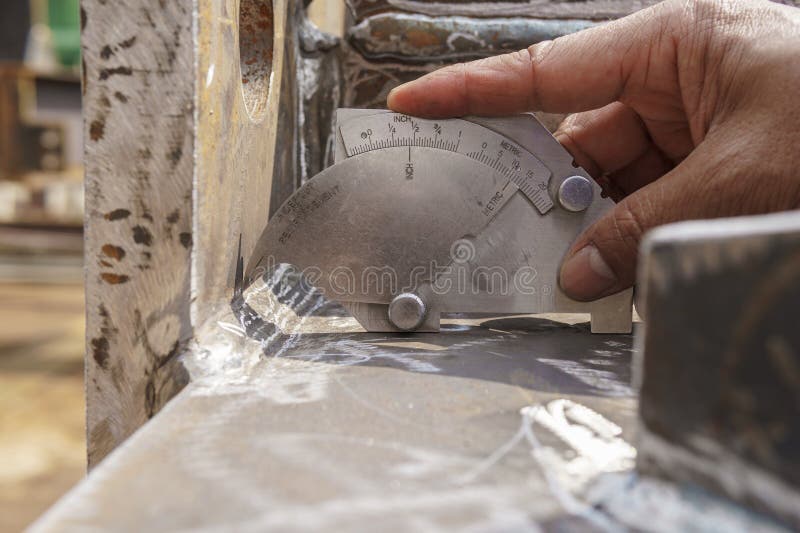Gauge Fillet Weld Explained: From Essentials to Advanced Techniques
Gauge Fillet Weld Explained: From Essentials to Advanced Techniques
Blog Article
Fillet Weld Style Techniques: Optimizing Joint Performance and Visual Appeal for Structural Honesty
In the realm of structural design and manufacture, the relevance of fillet weld layout techniques can not be overemphasized. By carefully thinking about variables such as weld account optimization, product option, joint prep work methods, welding procedure performance, and aesthetic improvement fabricators, designers and approaches can attain a harmonious equilibrium between capability and appearance in their bonded frameworks.
Weld Profile Optimization


Attaining an optimum weld profile involves a meticulous consideration of elements such as product thickness, joint arrangement, welding position, and preferred welding rate. Furthermore, the option of ideal welding parameters, such as voltage, present, and take a trip speed, is essential in regulating the shape and measurements of the fillet weld. Making use of innovative welding techniques, such as pulse welding or robot welding, can further refine the weld account to satisfy details style requirements and top quality requirements.
Basically, weld account optimization is an essential facet of fillet weld layout that directly affects the general efficiency and integrity of bonded joints in architectural applications.
Material Option Factors To Consider
When considering product selection for fillet weld layout, the compatibility of the base metals is a critical variable influencing the structural integrity of the joint. It is necessary to select products that not only bonded with each other properly yet additionally possess similar mechanical homes to ensure the load is evenly distributed between the weld and the base metals. Welding materials with significantly various residential properties can result in issues such as stress and anxiety focus, early joint failure, or fracturing.
In addition, the environment in which the welded framework will run need to be taken right into account when choosing materials. Factors like corrosion resistance, temperature variations, and exposure to chemicals can all impact the durability and efficiency of the weld joint. By picking materials that are suitable for the intended application and atmosphere, the total longevity and reliability of the welded joint can be substantially improved.
As a result, extensive factor to consider of product compatibility and environmental factors is vital in guaranteeing the weld joint's toughness, sturdiness, and general structural stability.

Joint Prep Work Techniques
Taking into consideration the essential function material option plays in guaranteeing the structural honesty of fillet weld joints, it is necessary to implement exact joint prep work techniques that optimize the connection between the base steels. Joint preparation is a vital step that straight affects the high quality and stamina of the weld.
Furthermore, tack welding the elements in place prior to the final weld assists preserve alignment and minimizes distortion during the welding procedure. By thoroughly adhering to these joint prep work techniques, welders can enhance the total performance and appearances of fillet weld joints while guaranteeing architectural stability.
Welding Process Efficiency
Efficient welding processes are vital for achieving optimum productivity and top quality in fillet weld fabrication. Processes like gas steel arc welding (GMAW) and flux-cored arc welding (FCAW) are typically made use of for fillet welds due to their convenience and speed.
Normal calibration of welding makers, examination of consumables, address and maintenance of welding lanterns can avoid downtime and revamp, eventually saving time and sources. Well-trained welders are a lot more adept at readjusting specifications, fixing problems, and keeping consistent weld quality.
Aesthetic Enhancement Techniques
To optimize the quality of fillet weld manufacture, executing aesthetic enhancement techniques can play an essential duty in making sure precision and accuracy during the welding process. Aesthetic enhancement techniques include different methods focused on improving the appearance and high quality of fillet welds. One common strategy is making use of back removing systems to eliminate oxidation on the backside of the weld, resulting in a cleaner, extra aesthetically pleasing surface. Furthermore, employing appropriate illumination plans in the welding location can improve visibility, enabling welders to keep track of the weld pool and make certain consistent grain development. Aesthetic help such as weld dimension evaluates and amplifying lenses can aid in analyzing weld profiles and measurements precisely. The usage of contrasting marking products or short-term tacking can aid in lining up and placing the work surfaces exactly before welding. By incorporating these aesthetic improvement approaches right into the welding process, welders can achieve not only structurally sound fillet welds yet additionally visually appealing outcomes that meet market requirements.

Final Thought
To conclude, optimizing fillet weld layout involves cautious consideration of weld profile, material option, joint prep work, welding procedure performance, and visual improvement approaches. By implementing these techniques, structural honesty can be enhanced while also achieving visual charm. It you could try here is very important to prioritize both performance and aesthetic appeals in fillet weld design to ensure the general quality and durability of the joint.
By thoroughly thinking about aspects such as weld profile optimization, material choice, joint prep work strategies, welding procedure efficiency, and aesthetic improvement makers, engineers and techniques can achieve an unified equilibrium in between performance and look in their bonded frameworks.In the world of fillet weld design, optimizing the weld profile plays a vital function in making certain structural integrity and efficiency. The weld profile, official site which consists of the dimension and form of the weld cross-section, directly influences the distribution of stress and anxiety and load-bearing capability within the joint. It is crucial to pick products that not just bonded with each other efficiently but likewise have comparable mechanical residential properties to ensure the lots is uniformly dispersed between the weld and the base metals - Gauge Fillet Weld.In verdict, enhancing fillet weld design entails cautious factor to consider of weld profile, product choice, joint prep work, welding process performance, and visual improvement techniques
Report this page